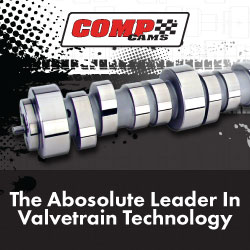
Eagle Raceway
Eagle's an up-and-down challenge for competitors
By Todd Turner
DirtonDirt managing editorEAGLE, Neb. (May 15) — Hikers, highway construction engineers and people sensitive to higher altitudes are frequently concerned with elevation changes. Dirt Late Model racers? Not so much.
Except when they come to Eagle Raceway.
The third-mile oval in eastern Nebraska, a sprint-car stronghold that this week is hosting the three-race Malvern Bank High Bank Heist on the Lucas Oil Late Model Dirt Series circuit, is among those rare dirt tracks with subtle elevation shifts from one set of corners to the next.
The track’s layout means that drivers exiting turn two and heading down the backstretch are gradually heading downhill, while it’s somewhat of an uphill climb exiting turn four and racing into turn one.
The main takeaway for newcoming drivers: Don’t overcook it going into turn three.
“It's wild for sure. It's a fun little joint,” said Dillon McCowan, the Urbana, Mo., driver who made his Eagle debut on Thursday with a 22nd-to-eighth run in the 40-lapper won by Ricky Thornton Jr. “I enjoy it, but it's definitely a different experience from one corner to the other.”
Hudson O’Neal of Martinsville, Ind., last season’s Lucas Oil winner at Eagle who led the first 11 laps Thursday before settling for seventh, said the high-banked track "just kind of throws you for a loop” while navigating the four corners.
“You've got two completely different corners and a little bit of ruts here and there and it just kind of throws your race car around a little bit — and makes you drive the crap out of it,” O’Neal said, cautioning about going too hard into turn three because “you’re going way faster than the corner needs you go to,” in part because the elevation change and the slight D-shape make it a bit longer than the frontstretch.
Those arriving at the track for the first time — many of the 37 entrants in Thursday’s weekend opener were either making their debut at the track or a second visit — usually stand in the pits above turns one and two to get their first look at the circuit.
From that perch, the sensation is that you’re standing much higher above that easternmost set of corners than turns three and four, which slope slightly away from you at the westernmost part of the track. It’s part illusion, but drivers agree that there’s and uphill-downhill feeling while circling the track.
A reporter didn’t have a protractor (nor the memories of the finer points of his sophomore Geometry class with Mrs. McDonald), but there’s an unofficial way to judge how much of an elevation change there is. A lengthy backstretch catwalk provides a great viewing angle for pitside observers, stretching from the turn-two exit down toward turn three.
The number of steps up to the catwalk closer to turn two: 6. The number of steps on the turn-three end: 11.
The elevation change is an added wrinkle for some of the sport’s best Dirt Late Model racers.
“Going uphill you can go in the (turn-one) corner harder. Down here (in turn three) if you lose elevation, it makes your car unload, so it's actually harder to get in the bottom up (in turn three) because you're going down an elevation and rather than going up an elevation,” said Jonathan Davenport of Blairsville, Ga., Thursday’s runner-up. If you build too much speed on the backstretch, “then you'll just slide out of the bottom obviously and miss the bottom, which is where the line primarily is down there,” at least early in the racing program.
A few drivers agreed that, yes, the slope is apparent, but no, it doesn’t specifically affect how you race the track.
“Obviously you can feel going uphill in the car and the transitions in the banking and everything, it's pretty flat on the bottom here and then once you get up on the banking, you can feel the banking,” said Blair Northdurft of Renner, S.D., a Thursday heat winner whose night concluded with a turn-four spin and then a frontstretch wreck. “You carry about the same speed everywhere because of the tackiness in the racetrack in certain spots. I mean, off the corners there's tack and then on the entrances it's pretty black and slick so, I mean, yeah, you can you carry about the same speed all the way around off the corner.”
Dusty Leonard of Marysville, Kan., is familiar enough with the track, and he minimized the elevation difference.
“It doesn't upset the race car. It doesn't really change how you enter the corner or anything like that. I think it'd probably affect a sprint car more than a Late Model (just) because the amount of downforce that they have,” Leonard said. “You just kind of get a run down out of turn two and the track kind of runs downhill and then kind of slopes right back uphill to get into turns three and four. It can maybe throw you off a little bit, but most of the time you don't really notice those things.”
Moments after McCowan climbed out of his car following his consolation race, which gave him a berth in the feature, he agreed the “back straightaway kind of shoots you off into the corner,” while in turn one “it’s definitely different. This is the first time I've been here, so it's definitely wild for me out there not knowing where to be.”
Daulton Wilson of Fayetteville, N.C., making his second visit to Eagle, says drivers can feel the speed difference from the backstretch (faster) to the frontstretch (slower), but couldn’t guess how it would stack up in miles per hour.
“This is one of the places that the elevation changes from end to end. I don't know that it really affects the way it races or not, but you can definitely tell that it’s a little bit different both ways,” Wilson said. “In the race car, your car's pulling uphill, just like a regular car. You can feel it pulling uphill coming down the frontstretch. Then like going down the back straightaway, you definitely gain speed getting down into turn three. Like I said, I don't know that it makes a race any different, but it's definitely a different feel, for sure.”
Thursday’s event provided three lead changes among three leaders and plenty of action, so the track’s layout — unique or not — provides a spectacle for fans.
“It's definitely something you have to think about when you're in the car,” Wilson said. "(When) you get going down the hill, it's like anything, it’s harder to slow down when you get there.”

















































